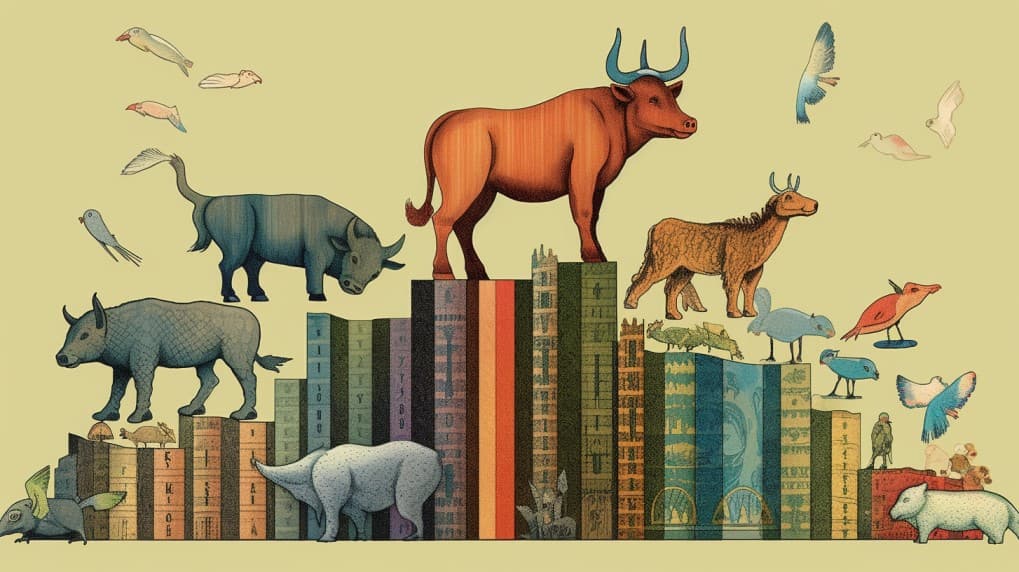
The best Transportation & Logistics ETFs
Discover the top-performing Transportation & Logistics ETFs that offer investors exposure to the thriving industry. From air and rail to shipping and delivery services, these exchange-traded funds provide a diversified portfolio of companies driving innovation and efficiency in the transportation and logistics sector. Explore this article to find out which ETFs have delivered consistent returns and may be worth considering for your investment strategy.
Transportation & Logistics ETFs Explained
Transportation and logistics play a crucial role in the global economy, facilitating the movement of goods and people across various industries. As an investor interested in this sector, Exchange-Traded Funds (ETFs) provide a convenient way to gain exposure to a diversified portfolio of transportation and logistics companies. By investing in these ETFs, you can potentially benefit from the growth and performance of the sector as a whole.
Comparing iShares Transportation Average ETF (IYT) and SPDR S&P Transportation ETF (XTN)
When it comes to Transportation & Logistics ETFs, two popular options are the iShares Transportation Average ETF (IYT) and the SPDR S&P Transportation ETF (XTN). These ETFs provide exposure to companies involved in various transportation modes, including airlines, railroads, trucking, and more. While both ETFs focus on the transportation sector, there are some differences to consider.
IYT is designed to track the performance of the Dow Jones Transportation Average Index, which consists of 20 leading transportation companies in the United States. It aims to provide investors with exposure to the broader transportation sector and is suitable for those looking for a diversified approach.
On the other hand, XTN tracks the S&P Transportation Select Industry Index, which includes a broader range of transportation companies, encompassing airlines, trucking, railroads, and more. XTN may offer more diversified exposure within the transportation sector compared to IYT.
It's important to note that ETFs are subject to market risks, and the performance of these funds can be influenced by various factors, including economic conditions, regulatory changes, and industry-specific events. Investors should carefully research and evaluate these ETFs, considering their investment objectives, risk tolerance, and other relevant factors before making any investment decisions.
 XTN overlap What are the best Transportation & Logistics ETFs?
XTN overlap What are the best Transportation & Logistics ETFs?
Why Invest in Transportation & Logistics ETFs?
- Exposure to a Growing Sector: The transportation and logistics industry is vital for economic growth and is expected to continue expanding as global trade and commerce increase. Investing in transportation ETFs allows you to participate in this growth potential.
Diversification: ETFs provide instant diversification by investing in a basket of transportation companies. This diversification helps reduce the risk associated with investing in individual stocks.
Efficiency and Liquidity: ETFs are traded on stock exchanges like individual stocks, offering liquidity and transparency. They can be bought and sold throughout the trading day at market prices.
Sector-Specific Focus: Transportation ETFs enable investors to target specific subsectors within the transportation industry, such as airlines, railroads, or trucking, depending on their investment preferences.
Considerations for Investing in Transportation & Logistics ETFs
- Expense Ratio: Compare the expense ratios of different transportation ETFs. Lower expense ratios can potentially enhance your investment returns over the long term.
Holdings and Weightings: Review the holdings and weightings of the ETFs to understand the companies and sectors the fund is primarily exposed to. This analysis can help you assess the level of diversification and concentration within the ETF.
Performance: Evaluate the historical performance of the ETFs, considering factors such as returns, volatility, and consistency. However, past performance does not guarantee future results.
Fund Size and Liquidity: Larger ETFs tend to have higher liquidity, making it easier to buy and sell shares without significantly impacting the market price. Consider the fund size and trading volume when assessing liquidity.
Conclusion
Transportation & Logistics ETFs offer investors an opportunity to gain exposure to the growing transportation sector while diversifying their portfolios. ETFs like iShares Transportation Average ETF (IYT) and SPDR S&P Transportation ETF (XTN) provide different approaches to investing in transportation companies. However, investors should conduct thorough research, assess their investment goals, and consider their risk tolerance before investing in any ETF.
Disclaimer: This article is for informational purposes only and does not constitute investment advice. It is important to conduct thorough research and consult with a qualified financial professional before making any investment decisions.
Get started






